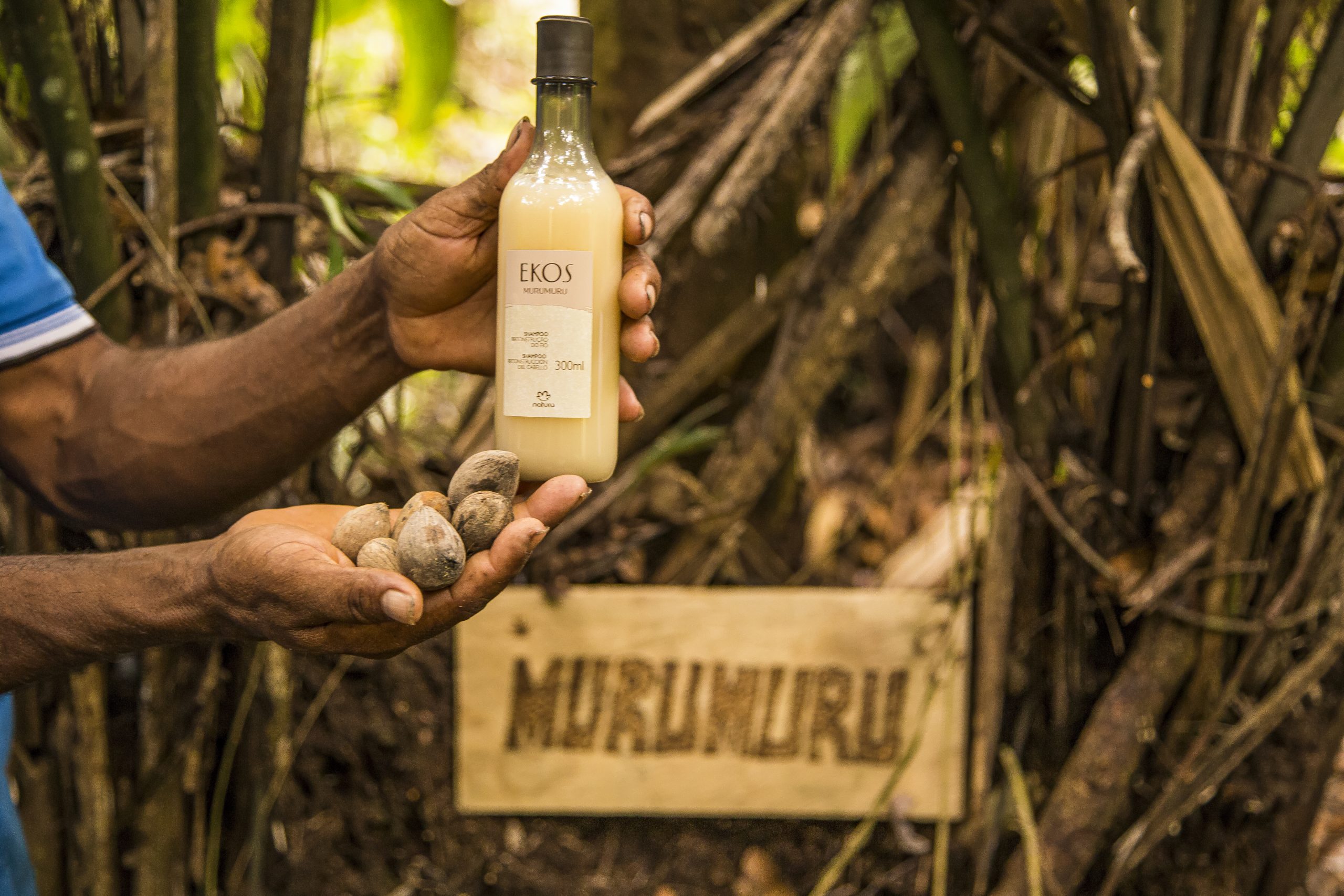Founded 1969
Annual revenue $6.6 billion (2020)
Jobs Created
7,000 families in 33 communities work directly with Natura, supplying oils, seeds and other components used in cosmetics and personal care products
Global market for cosmetics and personal care products $530 billion (2018)
Global market for organic cosmetics and personal care products $35 billion (2018)
This article is part of AQ’s special report on sustainable development of the Amazon.
Place the words “sustainable business” and “Amazon” together and the word Natura is likely to follow. A global conglomerate that includes Avon, Aesop and The Body Shop, Natura began betting on biodiversity in the 1990s, before its expansion outside of Brazil. But incorporating forest components into its product lines and finding suppliers in the Amazon was no simple task. “Hiring local experts from the beginning helped them structure a supply chain that simply didn’t exist before,” INSPER business school professor Leandro Pongeluppe told AQ.
The use of Amazon compounds — grown or collected by hand by local communities — also made Natura’s products more expensive than those of their competitors. But their risk paid off. Consumers are paying more for environmentally friendly products, and investors have taken notice: Since going public in 2004, Natura’s stock has risen by more than 4,000%.
Today, some 17% of Natura’s components are sourced from the Amazon, including ucuuba seeds, murumuru almonds and andiroba oil, according to Luciana Villa, Natura’s sustainability manager. Their impact goes beyond economic support for locals. “They pay suppliers for components, but also for carbon captures and royalties for their traditional knowledge, which gives locals strong incentives to protect the forest,” Pongeluppe told AQ. Comparing historical data for Natura-linked communities and similar areas without such incentives, Pongeluppe calculates the company has helped preserve almost 4.5 million acres (1.8 million hectares) of forest. “In perspective, that’s 1.7 million soccer fields standing because of this business model,” he said.
Yet, despite its success, other large-scale companies have yet to follow suit in investing the time and effort needed to work with forest dwellers as suppliers. “Natura, like Danone, may still be a unique case in terms of embedding social and environmental concern into its business model, but business leaders will have to change their minds soon,” said Pongeluppe. “Otherwise, they will lose competitiveness. And it will happen sooner than they may think.”




